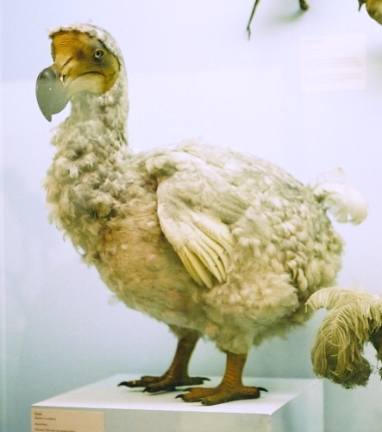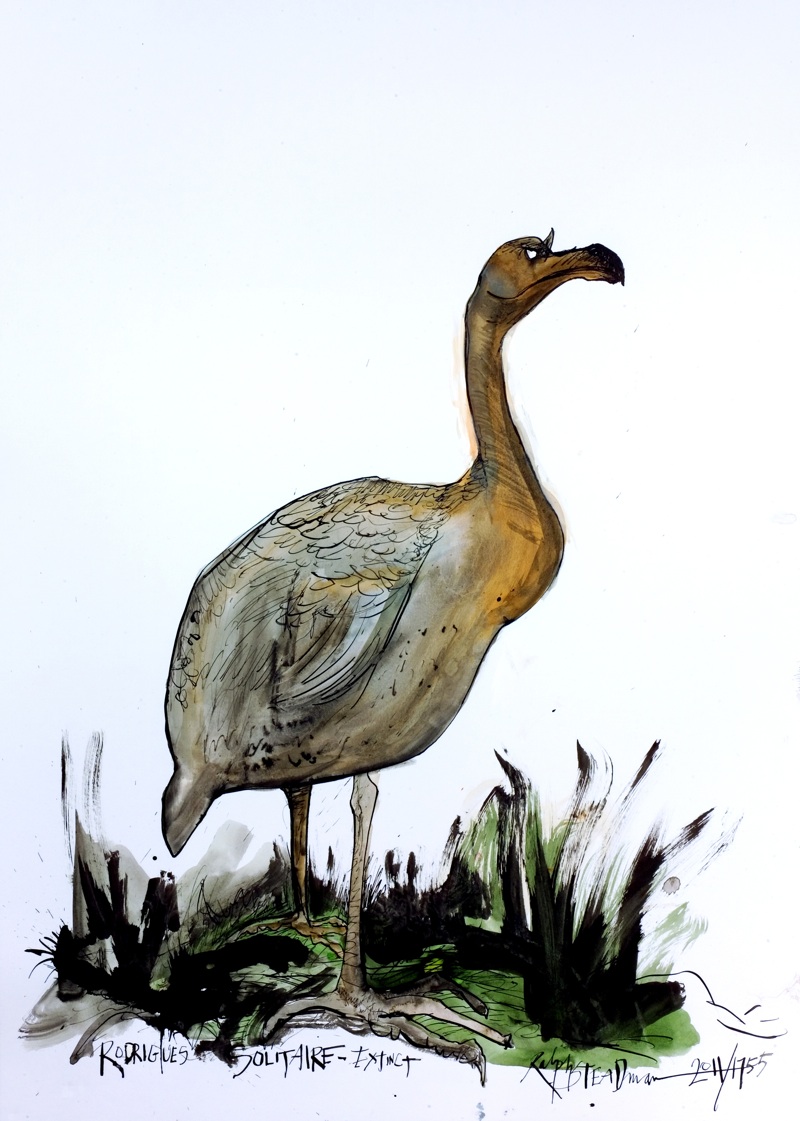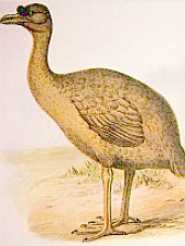
Pezophaps solitaria
TAXONOMY
Didus solitaria Gmelin, 1789, Rodrigues.
OTHER COMMON NAMES
French: Dronte de Rodriguez; German: Einsiedler; Spanish:
Solitario de la Rodrнguez.
PHYSICAL
CHARACTERISTICS
These large birds
were strongly sexually
dimorphic in
size; males were
larger than females
and possessed
metacarpal spurs the
size of “musketballs.”
DISTRIBUTION
Rodrigues, a small
(40 mi2; 104 km2)
volcanic island about
220 mi (350 km) east
of Mauritius in the
Indian Ocean.
HABITAT
Woodlands.
BEHAVIOR
Better known than the dodo from contemporary accounts.
Franзois Leguat described their
BEHAVIOR
in 1692: solitaires
lived in pairs, were territorial, laid clutches of a single egg, and
their young joined a creche. Skeletal remains show mended
fractures in the metacarpus that suggest a pugilistic function.
Wings were vigorously flapped “when angry” and produced “a
great noise...something like thunder in the distance” or “very
like that of a rattle;” this display was likely an aspect of
courtship
BEHAVIOR
. Their voice had been described as similar
to that of a gosling’s squeak.
This solitaire was an apparently territorial species. During
incubation or while caring for their young during the time
“which [it] is not able to provide for its self in several Months,
they will not suffer any other Bird of their Species to come
within two hundred yards round of the Place;” males responded
to intruding males and females to other females. This stated
measure suggests maintenance of a 25-acre (10-ha) territory.
FEEDING ECOLOGY AND DIET
This solitaire was reported to have fed on seeds, Latania palm
fruit, and foliage. Like dodos, Rodrigues solitaires appeared to
have had a marked annual fat cycle in which they were fat
from March to September and thin for the remainder of the
year. Gennes de la Chanceliиre described two young birds as
each having a fat layer 1-in (2.5-cm) thick over the body. Gizzard
stones have been found with skeletal remains.
REPRODUCTIVE BIOLOGY
Rodrigues solitaires laid a single egg in a nest constructed of
palm leaves. Nests were built on the ground and were about 16
in (40 cm) in height. Both sexes incubated eggs. Leguat reported
a seven-week incubation period, but based on estimated
egg size, models predict a 37-day incubation period. Young apparently
joined creches after a period with parents, although
Leguat described this social amalgamation of broods as “marriages.”
CONSERVATION STATUS
Extinct. Portuguese sailors reached Rodrigues in 1507, but the
island was not inhabited by humans until May 1, 1691, when
Leguat and eight others arrived. Introduced pigs were especially
devastating predators of young solitaires and eggs. A few
solitaires were reported in the wild in 1755 and 1761, but these
seem to be the last sightings. Individuals who speculate that
the solitaire disappeared in the 1750s blame feral cats and possibly
dry season fires for the solitaire’s demise.
SIGNIFICANCE TO HUMANS
Rodrigues solitaires were a source of fresh meat for crews and
passengers of ships traveling in the Indian Ocean.
Photo Gallery of - Rodrigues solitaire




 Animalia Life
Animalia Life